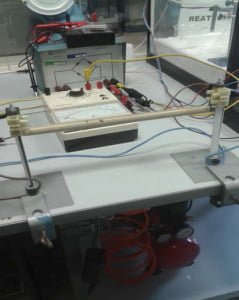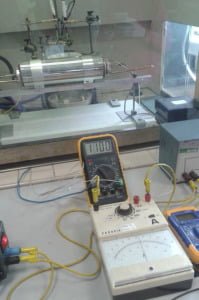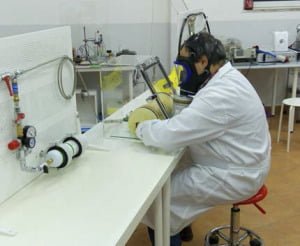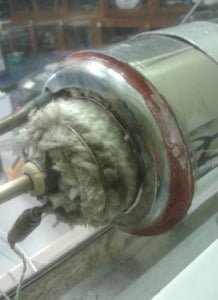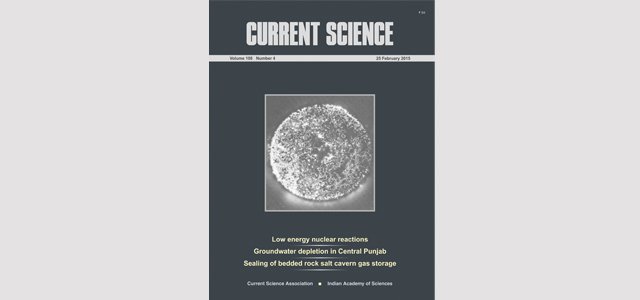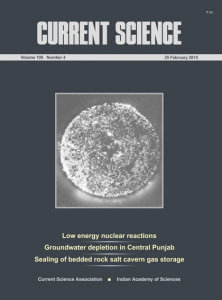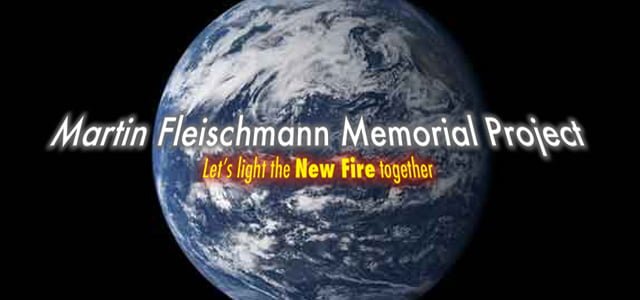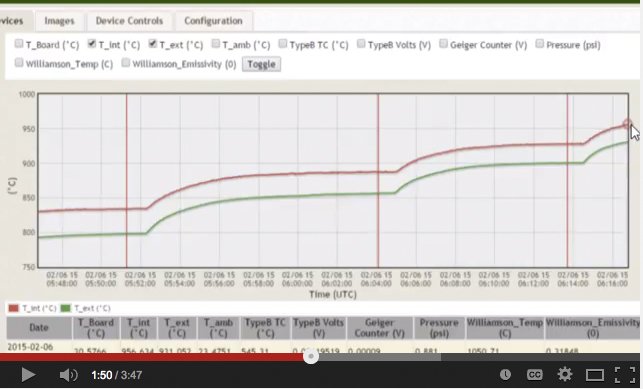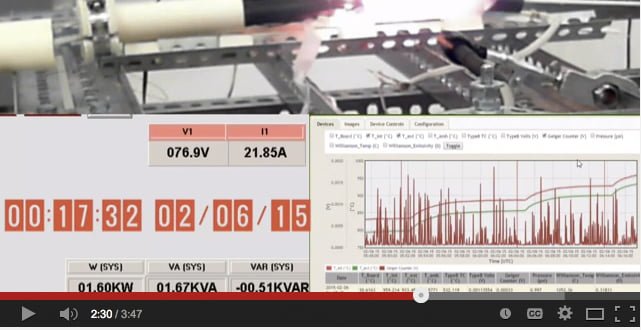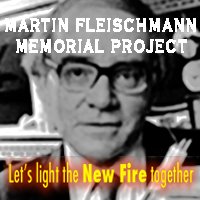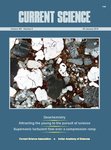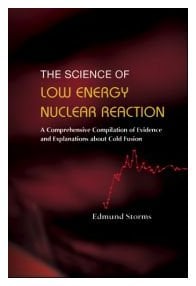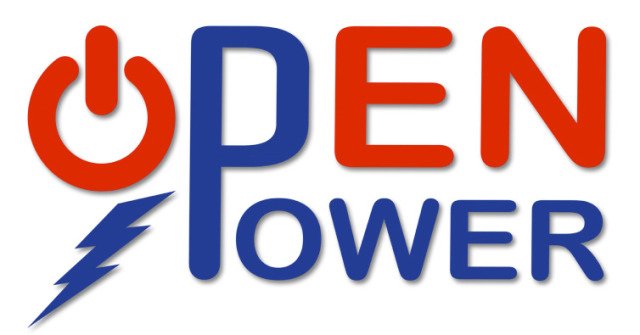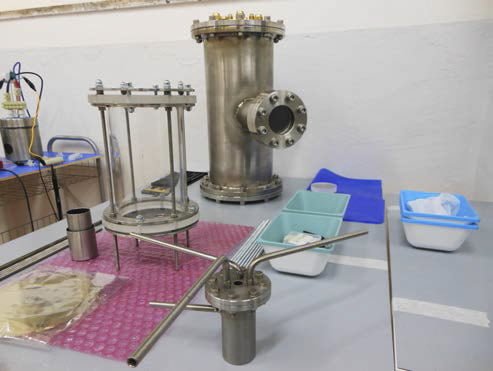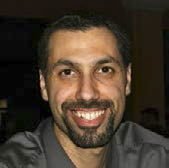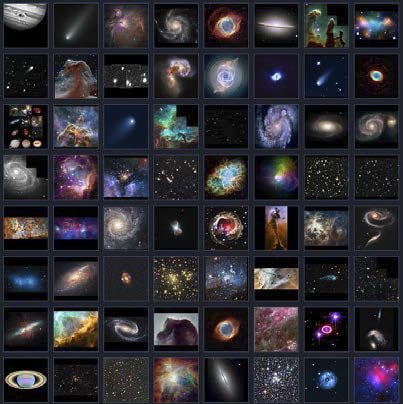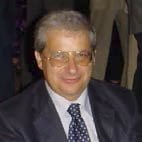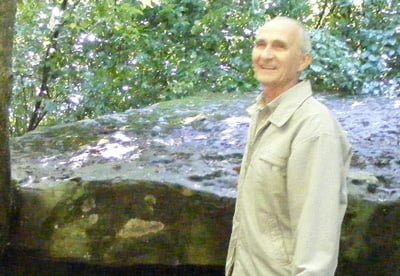 The Cold Fusion Research Laboratory, Japan has published Newsletter #90.
The Cold Fusion Research Laboratory, Japan has published Newsletter #90.
The newsletter is written by Dr. Hideo Kozima, Director of the Cold Fusion Research Laboratory and author of The Science of the Cold Fusion Phenomenon.
Find all issues of the Cold Fusion Research Laboratory Newsletter Archive
CFRL English News No. 90 (2015. 2. 10)
Published by Dr. Hideo Kozima, Director of the Cold Fusion Research Laboratory (Japan),
E-mail address; hjrfq930@ybb.ne.jp, cf-lab.kozima@pdx.edu
Websites; http://www.geocities.jp/hjrfq930/, http://web.pdx.edu/~pdx00210/
(Back numbers of this News are posted on the above geocities and/or PSU sites of the CFRL Websites)
CFP (Cold Fusion Phenomenon) stands for “Nuclear reactions and accompanying events occurring in open (with external particle and energy supply), non-equilibrium system composed of solids with high densities of hydrogen isotopes (H and/or D) in ambient radiation” belonging to Solid-State Nuclear Physics (SSNP) or Condensed Matter Nuclear Science (CMNS).
This is the CFRL News (in English) No.90 for Cold Fusion researchers published by Dr. H. Kozima, now at the Cold Fusion Research Laboratory, Shizuoka, Japan.
This issue contains the following items:
1. From the History of CF Research (4) ― The First Measurement of the Energy Spectrum of Neutrons emitted in the CFP by S.E. Jones et al. (1989)
2. Papers published in Cold Fusion and Elemental Energy (Cold Fusion) are uploaded into the CFRL Website
3. On the Dignity of Scientists (4) – The End of the STAP Cell Scandal
1. From the History of CF Research (4) ― The First Measurement of the Energy Spectrum of Neutrons emitted in the CFP by S.E. Jones et al. (1989)
It is well known that the first observation of the energy spectrum of neutrons emitted from cold fusion materials (CF materials) was performed by Jones et al. [Jones 1989] in BYU in the State of Utah. And it is also known an episode of the competition between Fleischmann-Pons and Jones as minutely described by G. Taubes [Taubes 1993]. In this article, we examine the work by Jones et al. in relation to the physics of the cold fusion phenomenon (CFP) and finally mention a brief personal comment on the competition.
1-1 Measurement of the Energy Spectrum of Neutrons from CF Materials by Jones et al. [Jones 1989]
The experimental result of the neutron energy spectrum from a CF material TiDx was published in the April issue of the Nature in 1989 just after the work by Fleischmann, Pons and Hawkins appeared in the April issue of the Journal of Electroanalytical Chemistry. For the readers’ convenience, we posted the paper by Jones et al. at this Website just after this News.
According to G. Taubes [Taubes 1993, Chapter 2], Bart Czirr in the Jones group was an expert of radiation detection and this fact is reflected in the measurement showing clear evidence of ̴ 2.5 MeV neutrons (at around the channel 100 in their Fig. 2) in the vast background due to the environmental neutrons. From this data, they concluded that the d – d fusion reaction (2) in the following reactions (in free space) is realized in the CF material NiDx:
d + d → 42He* → t (1.01) + p (3.02), Q = 4.03 (1)
→ 32He (0.82) + n (2.45), Q = 3.27 (2)
→ 42He (0.07) + γ (23.66). Q = 23.73 (3)
This experimental result stimulated the researches in the CFP in several ways. First, there have been trials to observe the energy spectrum of neutrons as precisely as possible to confirm the possibility of d – d fusion reactions (1) – (3) in CF materials to check its characteristics different from those in free space (cf. Sec.1-2). Second, there are several trials to explain the result obtained by Jones et al. by the effect of thermal neutrons abundant in environment (cf. Sec.1.3). Third, there are several works to check the effect of thermal neutrons by intentional irradiation (cf. Sec.1.4). We give a brief survey of these works below.
1-2. Precise Observation of the Energy Spectrum of Neutrons in CF materials
Many nuclear physicists are questionable to the realization of the above mentioned reactions (1) – (3) in solids where are no acceleration mechanisms, they supposed possible influence of the ubiquitous environmental neutron on the observed result. Jones et al. themselves tried to check the effect in extremely low background laboratory.
One of these trials was performed in the Kamioka Laboratory deep at 1000 m in the Kamioka mine, Gifu, Japan in collaboration with Tokyo University [Ishida 1992]. In this experiment, they could not obtain decisive confirmation of the neutron emission.
The second trial was done in the deep-underground neutron detection facility in Provo Canyon with state-of the-art detectors [Jones 1994]. In this experiment, they concluded a “null result” with the state-of the-art detector they were very proud of.
Despite their conclusion, we find uncertainty in their logic from the experimental data to the conclusion. In short, they had committed the same mistake as S. Pons did comparing the “control experiment” in protium system with the “real experiment” in deuterium system assuming there should not be occurred the seeking event.
In the case of S. Pons as cited by G. Taubes the situation was as follows:
“When Pons was asked why he had not reported results of control experiments with light water substituted for heavy water, he replied ‘A baseline reaction run with light water is not necessarily a good baseline reaction.’ When asked to elaborate, Pons intimated he had performed the experiment with light water and had seen fusion, saying ‘We do not get the expected baseline experiment. . . We do not get the total blank experiment we expected’ ” (CFRL News No. 89 http://www.geocities.jp/hjrfq930/News/news.html/ )
In the case of Jones et al., they observed ”neutron bursts” and “singles” both in the control and real experiments by their state-of-the-art detector [Jones 1994] (underlined at citation):
“The Pd/LiOD cells described above were polarized for 708.8 hours. During this time, 24 neutron-like burst events were seen, all having multiplicity 2. (This represents approximately one burst candidate per 30 hours, a very low rate indeed.) Thus, the neutron-like rate for these events was 48/708.8h = (0.07 ~ 0.01) n/hr. These numbers are in complete agreement with those found with hydrogen controls discussed above. There was no significant change in rate for neutron-like burst events between background and runs with electrical currents in the Pd/LiOD cells. There is no indication of a neutron burst signal above a very low background.”(Jones et al. [Jones 1994, p. 145])
“Even though there is no neutron-burst signal, there may still be neutron counts above background which we consider ‘singles.” The background rate for such events has been established as (0.65 ± 0.1) counts/hour using Pd loaded with hydrogen. Figure 3 displays results from each run of the electrolytic cells, showing 1-sigma error bars (statistical only). All of the observed rates are entirely consistent with background levels of 0.65 h–1. This exercise has as its conclusion that no neutrons were seen above very low background levels, in a high-efficiency detector. The most important observation may be that state-of-the-art neutron detectors are now available for studies requiring high-sensitivity instruments.” (Jones et al. [Jones 1994, p. 145])
They continued their effort to confirm nuclear reactions in CF materials and finally obtained positive results both in neutron [Keeney 2003] and charged particles [Jones 2003] in TiDx as published in ICCF10 (2003).
1-3 Detection of Higher Energy Neutrons
Stimulated by the work by Jones et al. [Jones 1989], many experimentalists in nuclear physics tried to detect 2.45 MeV neutrons to confirm the reaction (1) – (3) in CF materials and reveal characteristics of deuterated solids in the d – d fusion reactions. Typical data had been obtained by Takahashi et al. [Takahashi 1990] and Bressani et al. [Bressani1991, Botta 1992, 1999] with astonishing bi-products of higher energy neutrons with energies up to more than 10 MeV. Takahashi et al. observed neutrons up to 7 MeV, and Botta et al. up to 10 MeV. The number of neutrons with more than ̴ 3 MeV exceeds that of with ̴ 2.45 MeV.
This result has shown again a turning point to seek other possible mechanisms of nuclear reactions in CF materials other than the d – d fusion reactions (1) – (3) [Kozima 2010] (cf. also CFRL News No. 89).
1-4 Effect of Environmental Neutrons
The fact that the lattice constants of CF materials (solids used in the CFP experiments) are around a few Å (= a few ×105 fm) while the range of the nuclear force is a few fm has given a hint to nuclear physicists if the ubiquitous thermal neutron induces the nuclear reactions resulting in the neutron with 2.45 MeV observed by Jones et al. The earliest result on this line was published by Shani et al. in 1989 [Shani 1989].
Their result of the effect of thermal neutrons on the nuclear reactions in solids has generally been taken as negative evidence against the CFP, it should, in reality, be considered to show a characteristic of CF materials as we have already pointed out [Kozima 1998 (Sec. 8.2)]:
“The first experimental evidence of an effect of the thermal neutron on the nuclear reactions in solids was obtained by G. Shani et al. in Jerusalem, Israel. They measured neutron emission from targets irradiated with thermal neutrons from an artificial source where the targets were (1) palladium metal occluding deuterium (PdDx) and (2) gaseous deuterium (D2). The measured neutron in the case (2) was explained by the conventional nuclear physics very well but that in the case (1) was inconsistent with the conventional prediction.
The number of the observed neutron in the case (1) was more than three orders of magnitude larger than the prediction.
From their result, Shani et al. deduced a conclusion that the cold fusion phenomenon observed in solids is a result induced by the background neutron with a negative nuance against its revolutionary character.” ([Kozima 1998, Sec. 8.2a] Underline is at citation.)
1-5 Effect of Thermal Neutron Irradiation
The result obtained by Shani et al. has induced efforts to determine the effect of thermal neutrons as precisely as possible by artificial irradiation. Typical data were obtained by Celani et al. [Celani 1992], Stella et al. [Stella 1993] and Lipson et al. [Lipson 1996] showing enhancement of nuclear reactions by thermal neutron irradiation. Other data have been explained in my book [Kozima 1998 (Sec. 8.2)].
Thus, it has been shown with precision experiments on the neutron emission, that the CFP is closely related to the environmental neutrons ubiquitous on the earth: the CFP rarely occurs in a situation where are extremely low density of thermal neutrons and is enhanced by thermal neutron irradiation depending non-linearly on its density. The energy of neutrons emitted from the CF materials reaches up to 10 MeV and the number of neutrons with energies more than 3 MeV exceeds that of with ̴ 2.45 MeV.
1-6 Explanation of the Experimental Result on the Neutron Measurements
The experimental data on the neutrons emitted from CF materials explained above have shown another evidence of complex mechanisms in the CFP where occur nuclear reactions in solids including a lot of hydrogen isotopes than the CFP observed in protium systems explained in the article “From the History of CF Research (3) ― The First Observation of Nuclear Transmutation in a Protium System by R.T. Bush and R.D. Eagleton (1993, 1994)” in the previous News No. 89; http://www.geocities.jp/hjrfq930/News/news.html
We have used the TNCF model to explain successfully the data introduced above; The reactions of trapped neutrons with such nuclei in the CF materials as 21H (d) and 63Li induce succeeding reactions resulting in neutrons with higher energies than 2.45 MeV [Kozima 1997, 1998a (Section 11.4), 1998b, 1999].
1-7 The Competition for Financial Funds – an Episode
There is a full report on the relation between the paper by Fleischmann-Pons-Hawkins [Fleischmann 1989] and that of Jones et al. [Jones 1989] in the book by G. Taubes [Taubes1993]. By the way the scientific explanation of the paper by Jones et al. [Jones 1989], we give a brief personal comment on the relation here according to the description written in the book.
As cited below, S.E. Jones had worked on the muon-catalyzed fusion and the piezo-nuclear fusion for several years until 1988 and fully equipped with apparatus in measuring nuclear products from solids while he did not realize possible application of electrolysis to obtain CF materials. The Pons-Fleischmann proposal sent him to evaluate its value had given the idea of the electrolysis for the CF materials (PdDx and TiDx). He succeeded to measure the neutron spectrum from TiDx as written in their paper [Jones 1989] almost simultaneously with (but perhaps a little later than) the excess heat data by Fleischmann et al. [Fleischmann 1989]. As G. Taubes describes in his book, “he should have noted that he had assigned a student to do electrolysis experiments only after reading the Utah proposal.”
Paragraphs from G. Taubes [Taubes 1993] (Underlines are at citation).
Chapter 2 The Competition
“A few weeks after Palmer broached his theory to Jones, they came upon a paper by Boris Mamyrin, a Soviet researcher, who found excessive amounts of helium 3 in nickel foils. Fusion? Why not? In a memo dated April 1, 1986, Jones wrote, “Could it be that metal hydrides provide an environment conducive to confinement and fusion of hydro-gen isotopes?”
On April 7, Jones met at BYU with Palmer, Bart Czirr, the resident radiation detection expert, and Johann Rafelski., a theorist who was now collaborating with Jones on the muon-catalyzed fusion work. The four scientists discussed various strategies for catalyzing fusion at room temperature. Later Jones liked to call this meeting “the brainstorming session.” The scientists discussed using diamond anvil presses to condense deuterium, or even electric charges or lasers to shock deuterium atoms into fusing.
Jones’s notes for the day, as was his style, were cryptic. His handwriting bordered on the illegible. And, if he was then planning to use electrolysis to condense deuterium in a metal and induce fusion, as he would claim later, he never actually wrote down the word electrolysis. What is indisputable is that he scribbled a list of elements: “Al, Cu, Ni, Pt, Pd, Li. . .“ And next to Pd, palladium, and Pt, platinum, were the portentous words “dissolves much hydrogen.” And Jones did, at Rafelski’s suggestion, take the lab book to the BYU patent attorney, Lee Phillips, and ask that the page be notarized.
Three years later, and several weeks after the March 23 announcement of the discovery of cold fusion, the BYU press office released an official history of ”piezonuclear” fusion, which was now simply Jones’s term for cold fusion. This documented the progress of the BYU cold fusion research program, with the aim of dispelling Pons and Fleischmann’s accusations that Jones had somehow pirated the idea from them. The account described this April 7 meeting as the beginning of “Brigham Young University’s experimental program.” This made the BYU effort sound like a concerted three-year program, which is how Jones described it later to Pons and Fleischmann, and later still to reporters. Such was not the case.” (pp.. 26 – 29)
Chapter 3 Autumn 1988
“Shortly after March 23, 1989, the BYU public relations office distributed an official history of piezonuclear fusion research at BYU. Its purpose was to protect Steve Jones from any possible allegations of conflict of interest or worse—scientific piracy.
This account, which was compiled predominantly by Jones, cited a fusion group meeting on August 24, 1988, during which Jones and his colleagues discussed their piezonuclear fusion program. (This was approximately one month before Jones received the Pons-Fleischmann proposal (on September 20)). The account asserts that from August 24 onward the fusion group’s program was “vigorously” pursued. Jones told reporters, “From that day [August 24] we were essentially 100 percent working on this other piezonuclear fusion.”
However, when presented with the facts that nothing was done on the subject for twenty-nine days after the meeting and that he had reviewed the Pons-Fleischmann proposal by then, Jones insisted that this level of activity still legitimately meets the definition of “vigorous pursuit.” He did not deny that he may have had “impetus” from the Pons-Fleischmann proposal but argued that Pons and Fleischmann had not accused him of “impetus”—they had accused him of stealing ideas wholesale. Jones conceded that perhaps in drafting BYU’s official account he should have noted that he had assigned a student to do electrolysis experiments (of the kind Paul Palmer had pursued two years earlier and Pons and Fleischmann were now proposing) only after reading the Utah proposal.
– – – – – – – – – – – – – – –
To this Gajewski* added his own quasi-rhetorical question: would he be surprised to discover that Jones, consciously or subconsciously, intensified the pace of his cold fusion research because of what he saw in the Pons-Fleischmann proposal? He said he would be unable to answer definitively. “Maybe he did or maybe he didn’t, but I would not be surprised if he did. I have no evidence to that effect. It’s just human nature.”
Whether he did or not was important merely because Pons and Fleischmann believed that Jones only “vigorously” began his research after reading their proposal, and that the fate of billions of dollars, among other things, hinged on whether he did or not. And what Pons and Fleischmann believed, rightly or wrongly, was what led them publicly and emphatically to disclose their invention on March 23, which is to say well before they had gathered sufficient data to support their claim.” (pp. 36 – 37)
*Ryszard Gajewski was an administrator of Office Advanced Energy Projects (OAEP) at DOE, to whom Pons submited his proposal in September 1988.”
References
[Botta 1992] E. Botta, T. Bressani, D. Calvo, A. Feliciello, P. Gianotti, C. Lamberti, M. Angello, F. Iazzi, B. Minetti and A. Zecchino, “Measurement of 2.5 MeV Neutron Emission from Ti/D and Pd/D Systems,” Il Nuovo Cimento, Vol. 105A, 1663 – 1471 (1992).
[Botta 1999] E. Botta, T. Bressani, D. Calvo, C. Fanara and F. Iazzi, “On the Neutron Emission from the Ti/D System,” Il Nuovo Cimento, Vol. 112A, 607 – 617 (1999).
[Bressani 1991] T. Bressani, D. Calvo, A. Feliciello, C. Lamberti, F. Iazzi, B. Minetti, R. Cherubini, A.M.I. Haque and R.A. Ricci, “Observation of 2.5 MeV Neutrons emitted from a Titanium- Deuterium Systems,” Nuovo Cimento 104A, 1413 – 1416 (1991).
[Celani 1992] Celani et al., “Search for Enhancement of Neutron Emission from Neutron-Irradiated, Deuterated High-Temperature Superconductors in a Very Low Background Environment,” Fusion Technol. 22, 181 (1992).
[Fleischmann 1989] M, Fleischmann, S. Pons and M. Hawkins, “Electrochemically induced Nuclear Fusion of Deuterium,” J. Electroanal. Chem., 261, 301 – 308 (1989)
[Ishida 1992] T. Ishida, “Study of the Anomalous Nuclear Effects in Solid-Deuterium Systems,” Master Degree Thesis, Tokyo University, February 1992. ICRR – Report – 277 – 92 – 15.
[Jones 1989] S.E. Jones, E.P. Palmer, J.B. Czirr, D.L. Decker, G.L. Jensen, J.M. Thorne, S.F. Tayler and J. Rafelski, “Observation of Cold Nuclear Fusion in Condensed Matter,” Nature, 338, 737 – 740 (1989).
[Jones 1994] S.E. Jones, D.E. Jones, S.S. Shelton and S.E. Tayler, “Search for Neutron, Gamma and X-Ray Emission from Pd/LiOD Electrolytic Cells; A Null Results,” Trans. Fusion Technol., 26, 143 – 148 (1994). ISSN 0748-1896
[Jones 2003] S.E. Jones, F.W. Keeney, A.C. Johnson, D.B. Buehler, F.E. Cecil, G. Hubler, P.L. Hagelstein, J.E. Ellsworth and M.R. Scott, “Charged-particle Emissions from Metal Deuterides,” Proc. ICCF10, pp. 509 – 523 (2003). ISBN 981-256-564-7
[Keeney 2003] F.W. Keeney, S.E. Jones, A.C. Johnson, P.L. Hagelstein, G. Hubler, D.B. Buehler, F.E. Cecil, M.R. Scott and J.E. Ellsworth, “Neutron Emission from Deuterided Metals,” Proc. ICCF10, pp. 525 – 533 (2003). ISBN 981-256-564-7
[Kozima 1997] H. Kozima, M. Fujii, M. Ohta and K. Kaki, “Jones’ Neutron Data
Explained Using the TNCF Model,” Cold Fusion 24, 60 – 64 (1997), ISSN 1074-5610.
Also Reports of CFRL 15-2, 1 – 7 (2015) posted at the CFRL Website:
http://www.geocities.jp/hjrfq930/Paperss/paperr.html
[Kozima 1998a] H. Kozima, Discovery of the Cold Fusion Phenomenon (Ohtake Shuppan Inc., 1998). ISBN 4-87186-044-2. The “References” in this book is posted at the Cold Fusion Research Laboratory (CFRL) Website;
http://www.geocities.jp/hjrfq930/Books/bookse/bookse.html
[Kozima 1998b] H. Kozima, M. Fujii, K. Kaki and M. Ohta, “Precise Neutron Measurements Revealed Nuclear Reactions in Solids,” Elemental Energy (Cold Fusion) 28, 4 – 15 (1998) , ISSN 1074-5610.
[Kozima 1999] H. Kozima, M. Ohta, M. Fujii, K. Arai, H. Kudoh and K. Kaki, “Analysis of Energy Spectrum of Neutrons in Cold-fusion Experiments by the TNCF Model,” Il Nuovo Cimento 112A, 1431 – 1438 (1999)
[Kozima 2006] H. Kozima, The Science of the Cold Fusion Phenomenon, Elsevier Science, 2006. ISBN-10: 0-08-045110-1.
[Kozima 2010] H. Kozima, “Neutron Emission in the Cold Fusion Phenomenon,” Proc. JCF11, pp. 76 – 82 (2010) ISSN 2187-2260. And also Reports of CFRL (Cold Fusion Research Laboratory) 11-3, 1 – 12 (January, 2011):
http://www.geocities.jp/hjrfq930/Papers/paperr.htm
[Lipson 1996] A.G. Lipson, D.M. Sakov and E.I. Saunin, “Change in the Intensity of a Neutron Flux as It Interaction with a K(SxD1-x)2PO4 Crystal in the Vicinity of Tc,” J. Tech. Phys. Lett. (in Russian), 22, 8 ((1996). And also V.A. Filimonov, “A New Cold Fusion Phenomenon?” Cold fusion 7, 24 (1995).
[Takahashi 1990] A. Takahashi, T. Takeuchi and T. Iida, “Emission of 2.45 MeV and Higher Energy Neutrons from D2O-Pd Cell under Biased-Pulse Electrolysis,” J. Nuclear Science and Technology, 27, pp. 663 – 666 (1990).
[Shani 1989] G. Shani, G., C. Cohen, A. Grayevsky and S. Brokman, “Evidence for a Background Neutron Enhanced Fusion in Deuterium Absorbed Palladium,” Solid State Comm. 72, 53 (1989).
[Celani 1992] Celani et al., “Search for Enhancement of Neutron Emission from Neutron-Irradiated, Deuterated High-Temperature Superconductors in a Very Low Background Environment,” Fusion Technol. 22, 181 (1992).
[Stella 1993] Stella et al. “Evidence for Stimulated Emission of Neutrons in Deuterated Palladium, “Frontiers of Cold Fusion (Proc. ICCF3) (1992, Nagoya, Japan), p. 437 (1993).
2. Papers published in Cold Fusion and Elemental Energy ( Cold Fusion) are uploaded into the CFRL Website
The journal Cold Fusion and the succeeding Elemental Energy (Cold Fusion ) had been published in 1994 – 1998 by Wayne Green after the ICCF4 (December, 1993) in Hawaii, USA. We had benefit to publish papers in the cold fusion phenomenon (CFP) when there were few journals opening their gates for us. Now, it is very difficult to read papers published in them at present.
We decided to upload our papers published in the Cold Fusion and Elemental Energy (Cold Fusion) into the CFRL website:
http://www.geocities.jp/hjrfq930/Papers/paperc/paperc.html http://www.geocities.jp/hjrfq930/Papers/paperc/paperc.html
We hope the old papers published more than 15 years ago keep their life and are useful for the development of science of the CFP.
At the same time, we posted a list of the contents of Journal Cold Fusion and the Elemental Energy (Cold Fusion) at at the site for convenience of readers.
3. On the Dignity of Scientists (4) – The End of the STAP Cell Case–
We have cited the old saying in Japan, “Lying is a first step to thieving” or “Lying is the beginning of stealing,” to be prudent in our activity in the cold fusion phenomenon (CFP) (CFRL News No.84). By the way, we had cited the STAP cell case, just then been frequently reported in mass media as a bad example (CFRL News Nos. 85 and 87).
Last December, the Investigation Committee in Riken (the Chief of the Committee is Dr. Isao Katsura, the Director of the National Genetics Research Laboratory) issued the Final Report of the Committee in which they reported that Riken and Dr. Obokata have failed to recreate STAP cells after months of experiments. They had shut down the probe, which was originally scheduled to last until March. The cells used to show the realization of the STAP cell were in reality the ES cells known already to be a stem cell (The Mainichi, Dec. 26, 2014). However, they could not confirm when and who replaced the ES cell for the so-called STAP cell.
Astonishing enough, it was reported that Dr. T. Ishikawa, a former Senior Researcher in the Riken and the Director of a NPO corporation, charged Ms. Haruko Obokata of theft as the article of the Nikkei cited below shows. The fact of this charge itself, even if it is real or not, is a tragic affair in the world of science going as is alleged in the saying “Lying is the beginning of stealing.”
“Riken OB charged Miss. Obokata by suspect of ES cell theft
2015/1/26 22:52
The former Senior Researcher Dr. Tomihisa Ishikawa, now the Director of a NPO organization, laid an information of the theft of the BS cell from Prof. Teruhiko Wakayama’s Laboratory against Ms. Haruko Obokata to the Kobe police station. By the bill of indictment, Miss. Obokata had stolen ES cell from Wakayama Laboratory at around years of 2011 ~2013. She used the ES cell to the stem cell experiment with Prof. T. Wakayama and wrote papers on the STAP cell which were published in the Nature. Around the STAP cell, the Investigation Committee of Riken published a Final Report in which they concluded that the so-called STAP cell discovered by Obokata et al. is probably a ES cell with certainty.” (Nikkei, 2015. 1.16, Translated into English by H.K. Original article (in Japanese) is cited in the Japanese version of this News )
For the complete list of CFRL Newsletters, go to the CFRL Newsletter Archive.
